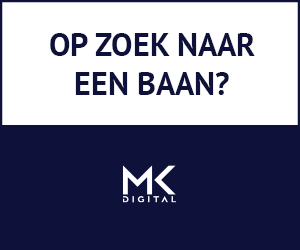In this podcast, we talk to Stewart Hunwick, field chief technology officer (CTO) for cloud platforms in EMEA at Dell, about the use of artificial intelligence (AI) in storage.
More specifically, we talk to Hunwick about artificial intelligence for IT operations (AIOps) as a tool to improve storage management, sustainability and data security.
Hunwick likens AIOps in storage management to a fitness watch for the datacentre. In other words, it can help lower the carbon footprint and monitor energy usage at the micro and macro levels across a fleet.
But further than that, it can enable reactive and proactive responses to security concerns, and allow administrators to ask questions in natural language about devices under their management and even generate code.
What is AIOps?
AIOps is artificial intelligence operations. And essentially, it’s a way of using this incredible burgeoning field of AI to streamline and enhance operations. It’s a bit like a fitness watch for your datacentre.
That’s a great analogy, because if we think about what a fitness watch does, it gathers a ton of raw data from you as an individual, does a lot of number crunching on that, and then presents back to you what those numbers mean so you can gain those insights.
The key idea of AIOps as a concept is being able to understand the metrics of what’s going on in a datacentre, but also use those metrics to project what’s going to happen in the future, to try to identify anomalous behaviour. And also really to use it to try to reduce risk, increase sustainability, increase the overall performance and make things simpler to operate.
How can AIOps help with storage sustainability?
Sustainability is something that’s top of mind for many organisations, and there are a lot of different ways that we can look at this.
If we look quite specifically at this from a storage point of view, what we see is a drive for organisations to lower their carbon footprint and to lower the power consumption of storage platforms.
What AIOps is about is understanding what the current power consumption is, not just at a micro level, as in per system, but also being able to see it at a macro level, so I can see across my entire datacentre fleet – that is what my carbon footprint is, that is what my energy consumption is.
But then using that data to start building in those trends, those forecasts, so I can say, “OK, this is what my power consumption is now. I see a change of 5% increase year on year. So, I can see that something’s changed.”
Or I might be able to say, “Well, there’s a really unusual spike on this particular system. This system is behaving a little bit unusually, which might indicate there’s a particular workload that’s consuming more performance than it should be.”
But we can go even further than that, and have the capability to project out what the power consumption, what the carbon footprint needs would be in the future. So, again, using all that data to model out what that might look like in the future.
This is really all about helping not only to understand what you’re currently consuming and using, but also to help you plan for the future. So, you can make those decisions about where to place new workloads, potentially about which systems to be deployed where, and get a really solid view of what the future could look like from a power and consumption point of view.
How can AIOps help with data security?
Data security is a pretty broad topic. We’ve seen some great success with a variety of organisations in a number of verticals, particularly around the healthcare vertical, where we’re able to simplify administration by embodying this AIOps way of working.
If we think about security in two areas, we think about it in terms of reactive and proactive security.
An AIOps way of working can, first of all, help in a reactive manner. So, because it’s able to see what’s happening from a data point of view, it can understand whether or not the data access patterns are normal, whether they’re abnormal. It can look at things like what the data reduction ratio is.
Of course, if the data reduction ratio suddenly becomes quite poor, that’s a good indication that the data that’s being written to it is pre-encrypted or pre-compressed. If it’s pre-encrypted, then that may indicate a ransomware attack in progress.
By combining that metric with the rate of data growth, where the attack’s coming from, we can pinpoint that and say, “Hey, we know that we can see an attack’s happening. We know where it’s coming from and here’s the confidence that we have.” That’s very much the reactive side of things.
An attack is happening in real time. Let’s identify where it’s coming from.
On the proactive side of things, if you can imagine as you leave your house for work in the morning, having something on your phone that could quickly check and say, “Oh, hey, you haven’t locked these windows”, or, “You haven’t locked the front door”, or perhaps, “You’ve left the keys in the back door.”
There’s a ton of different things that can be configured on server fleets and on storage fleets; different settings, different parameters. And, for instance, having Telnet enabled on a server. Now, that, of course, has no encryption on, so it may potentially be a weakness.
With a proactive identification from AIOps, we’re able to scan the configuration of systems and identify these weaknesses, identify the way the systems are configured and try to spot attack vectors before you’re attacked using them. Effectively checking whether or not the door’s locked before anyone tries to break in.
How can AIOps help with storage management?
Storage management is a big topic. It’s something a lot of organisations want to spend time chatting to us about. It all comes down to that same example I gave a moment ago in the healthcare sector of driving down the cost of administration and simplifying it.
Where we’re seeing the most recent growth here is taking the idea of AIOps one step further and leveraging generative AI specifically, by building in a generative AI agent that is able to get you to the heart of the answer to a question as quickly as possible.
So, you might ask a simple question along the lines of, “How does this particular feature work?” or “What’s the benefit of that particular capability?”
For instance, a metro replication. You might then want to say, “How do I set it up?” Or, “Give me an executive summary of that particular capability so I can send it on to my leadership team.”
Going further than that, though, what we’re seeing is that these engines are able not just to give you rapid answers and not just to kind of reference documentation, but actually, for instance, generate snippets of code either using a REST API [application programming interface], an Ansible playbook or generate some Python code using SDKs [software development kits].
[You might say], “I need to build an Ansible playbook to deploy in my environment.” It’ll come back and go, “All right, here’s a sample playbook you might want to use.”Where this is ultimately going, and the most recent innovation we’re seeing, is the capability to ask questions about the specifics of your environment. So rather than [just being] relevant to documentation, being able to say, “What’s happening on this particular system? Is there a performance impact caused by replication on that particular system? How do I remedy the system over that?”
All that kind of stuff, because it’s able to understand all the data, it can see all the context, and it can really build you that valuable answer, ultimately aiming to help free up time for your organisation.













